Interviewed by: Steve J. Ray
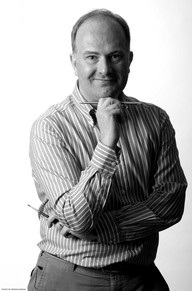 Mark Buckingham is a fan-favorite, multiple Eisner Award winning British artist. He started out working on strips for British satire magazine The Truth in 1987. This is where where he first worked with Neil Gaiman, creating illustrations for some of his articles. His American debut came in 1988, as inker on DC Comics Hellblazer, before he also took over as penciller from issue #18.
Mark Buckingham is a fan-favorite, multiple Eisner Award winning British artist. He started out working on strips for British satire magazine The Truth in 1987. This is where where he first worked with Neil Gaiman, creating illustrations for some of his articles. His American debut came in 1988, as inker on DC Comics Hellblazer, before he also took over as penciller from issue #18.
Mark has worked for many independent publishers, most notably on Marvelman (renamed Miracleman in the U.S.) taking over – with Gaiman – from Alan Moore and John Totleben. For Marvel he’s inked Chris Bachalo’s pencils on Generation X, and pencilled Paul Jenkins’ run on Peter Parker: Spider-Man. His range and talent as an accomplished penciller, inker and writer has led him to become one of fandom’s most beloved comics creators.
For DC Comics, he has inked both Death: The High Cost Of Living and Death: The Time Of Your Life, has drawn multiple issues of Vertigo’s Sandman, Shade: The Changing Man and over a hundred instalments of the incredible Fables, for which he won four Eisner awards. (2003, 2005, 2006 and 2007).
As a huge fan of his work, meeting and interviewing Mark at this fall’s MCM London Comic-Con was a great experience. Whoever coined the phrase “never meet your heroes” clearly never met Mark Buckingham.
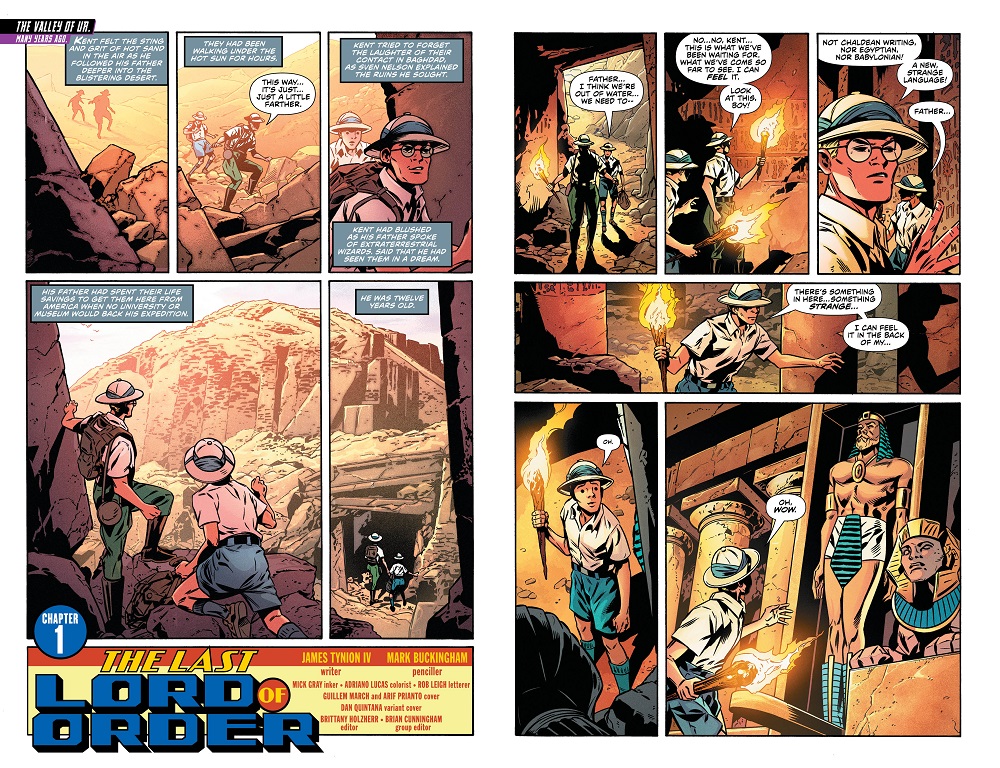
Comics, Old And New
Steve J. Ray: Mark, it’s so great to meet you and talk to you.
Mark Buckingham: Thank you. It’s lovely meeting you too.
SJR: Having followed your work from Sandman, your amazing inks on both of Neil Gaiman’s Death mini-series and your incredible, haunting work on Fables, it was brilliant seeing you back at DC, on the recent Justice League Dark #13, after not seeing your art for quite a while.
MB: Oh, you saw that? That was great fun to do. I hadn’t drawn Doctor Fate since 1989, and it was my first proper chance to draw Wonder Woman, so it was a pleasure to draw. I’m so glad you liked it.
SJR: It was great! It was such a nice touch, as it hearkens back to your phenomenal work on all those classic Vertigo books. I know you’ve never stopped drawing, but it’s great seeing you back at DC.
MB: I never really left. My first work for the USA was for DC, on Hellblazer, with Karen Berger giving me my first big break. I have always felt genuinely at home working at DC, especially Vertigo, ever since. Even in periods where I’ve been busy on a major work for another publisher, like the early 2000s when I was full time with Spider-Man at Marvel, I always tried to make sure I did something small at DC, as maintaining that relationship is important to me.
I’ve been very fortunate over the years, having the honour of working with wonderful writers like Neil Gaiman, Bill Willingham, Paul Jenkins, and so many others. I’ve had the pleasure of drawing hundreds of comics, thousands of pages, over the years, and I feel very lucky to have had such a wide ranging and productive career, but I don’t take anything for granted and I’m always eager to keep moving forward.
SJR: Justice League Dark #13 may be my 200th Mark Buckingham Comic, but to a new fan it could be their first.
MB: That’s a lovely way of Looking at it. I’m always hoping to reach out to new readers. I think these days, where people are discovering things digitally or in trade collections, away from the context of traditional publishing comic publishing schedules, a brand new comic can be just as much of a stepping on point for discovering my work as something I did thirty years ago that has just been reissued. I try not to worry too much about chronology.

Myths and Fables
SJR: You’ve certainly drawn a lot, and for virtually every major publisher. Sandman, John Constantine: Hellblazer, Batman, Spider-Man, the X-Men, so many incredible characters. Are there any others that you’d still like to have a go at?
MB: That’s a great question. I think at this point, I have had the chance to draw most of the comic characters I have wanted to. Maybe only in a panel or two, or a cover, but I think I have been lucky enough to draw most of my favourites at some point. I’m always open to more, especially if it gives me the chance to work with a writer I admire, with an interesting take on the character, but I have to confess the characters I am most eager to draw are creations of my own that I haven’t had the chance to get into print yet.
SJR: That’s a great answer! There are some incredible creator owned titles out there, and I know that many writers and artists like the freedom of being able to handle their own creations, without the restrictions, or pressures, of taking on licensed characters.
MB: Exactly. It is fabulous to have the opportunity to work for major publishers on their iconic characters, but you are always conscious that you are playing in someone else’s sandpit. I’m grateful when the opportunity arises, and very respectful of the body of work that precedes me, but getting to work on something that’s entirely your own can be both refreshing and liberating.
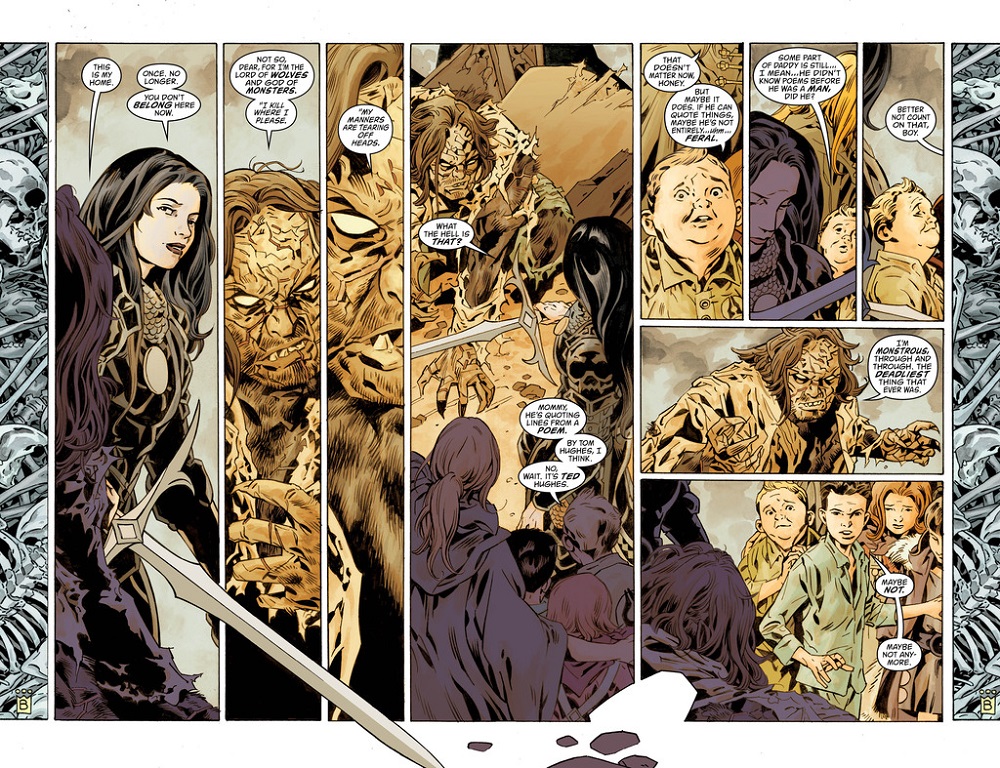
It’s A Kind Of Magic
SJR: I know that Fables comes very close in that respect. This was a series that you drew almost every issue of, and that holds a very special place in the hearts of fans worldwide. I know that they’re essentially fairy-tale characters, but that series breathed newer, deeper – and sometimes much, much darker – life into all of them
MB: Oh, yes. I have so many wonderful memories from working on Fables, and having drawn so much of it, and even plotting and writing some bits too, those stories mean so much to me, to this day. Working with Bill always felt so natural, like we were made to work together, editor Shelly Bond always brought out the best in both of us, plus fantastic cover artists James Jean, and we were blessed with an amazing team, Steve, Todd, Lee, and so many more amazing talents who contributed so much along the way.
If felt like playing in the most amazing band ever, and I knew I could rely on everyone around me to be amazing, meaning that I could focus all my efforts on just trying to bring out the best in my own work.
I loved that we were building a world from the ground up, or worlds in fact, by the time it ended. I struggled with team books in the past, but when you are making your own, one character at a time, it seems effortless in comparison. I think I stopped keeping count when the cast went over three hundred characters! Everything about Fables was so very rich and rewarding.
SJR: Incredibly so. I still talk about Fables with friends and colleagues regularly, as it was an incredible series from start to finish. But you also draw superheroes, and do so as well as you draw fantasy and horror. I like to pride myself on being to able to recognise my favorite artists’ styles and identify their work at a glance. Reading the aforementioned Justice League Dark, though, I was a good few pages in before I thought, “Hang on… this is familiar”, then going back to the credits and only then realising that I was reading a comic drawn by Mark Buckingham. I recognised your style eventually, but you change and adapt it for every different title and character. Your line art in Fables, and Sandman is lighter, more ethereal… but your superhero stuff has heavier lines, and is much more high contrast.
MB: (laughs). Yes, well that is something I’ve always tried to do. To let the subject matter dictate the style and to not be afraid to reinvent myself when ever I’m faced with a new project. I’ve always had a reputation for being a chameleon of comics.
SJR: Yes! That’s it… exactly.
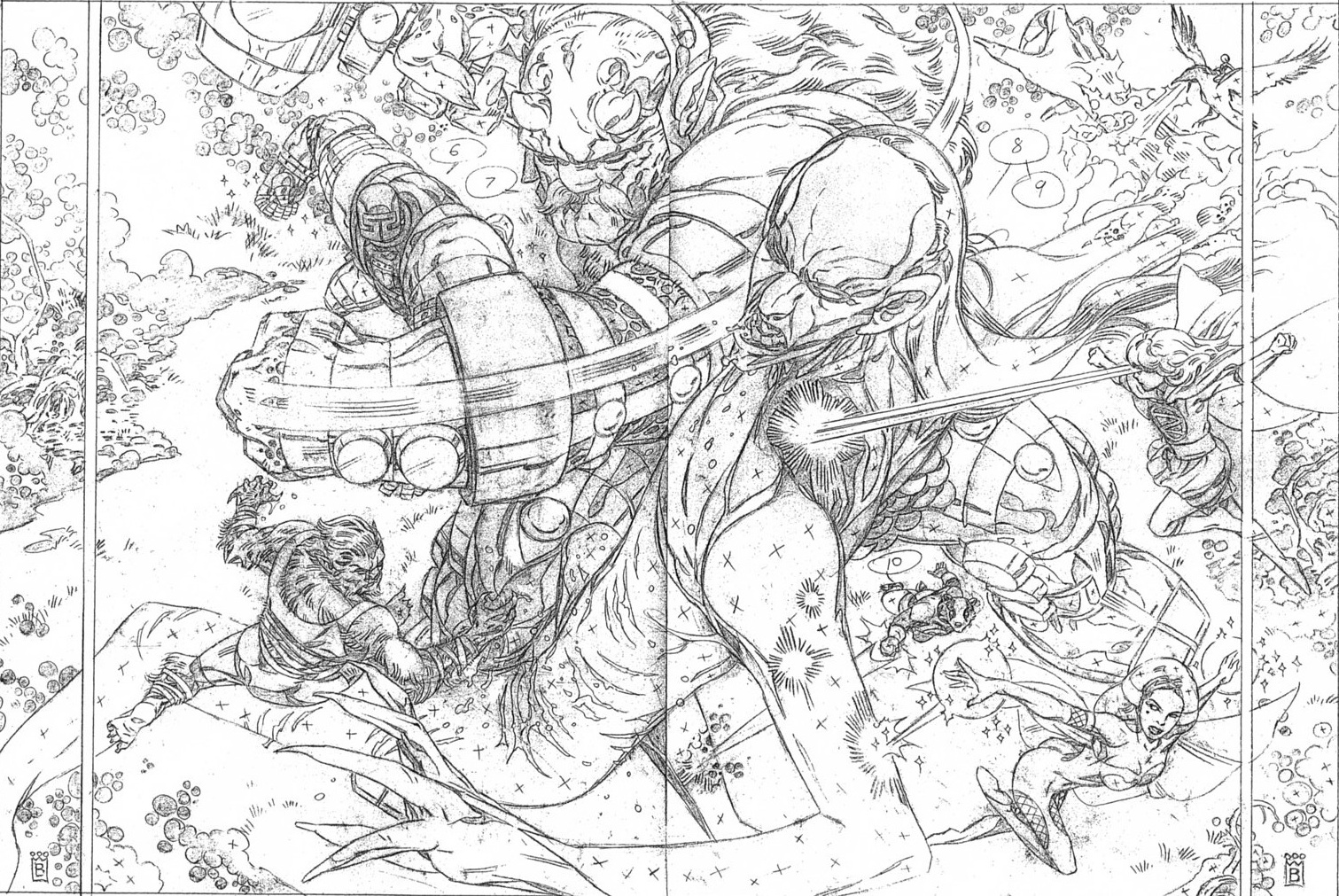
The Comics Industry
MB: For a very long time I didn’t really have a defined style. In the early days it was more by accident than design. My entry into comics was very rapid, and I found myself drawing professionally before I really had a chance to find my own voice. I leapt from doing humour strips for satire magazines in the UK to drawing a horror book for DC in the USA literally from one month to the next.
When Neil and I took over Miracleman from Alan Moore and John Totleben, both being a little nervous about the big shoes we were filling, we turned this to our advantage. Instead of competing with them, with a direct continuation from where they left off, we side stepped and moved the viewers attention away from a pantheon of gods looking down, to how it might be for the rest of the population of Earth looking up.
We instead wrote a series of short stories, The Golden Age, where we could tell lots of different tales from different characters perspectives, utilising a wide range of art styles, and layout approaches for each one. We turned my search for an art style into a positive, and I’ve never looked back.
It wasn’t really until Fables, starting in 2002, that I finally spent long enough on a single project, and one that was once more very personal to me, that my current more distinctive style began to take shape.
SJR: Fables, quite rightly, ended when the story you and Bill told concluded. Just like Sandman did when Neil Gaiman finished telling all the stories he wanted to tell. I think that ending Fables, rather than have it carry on with a new creative team, was the correct choice. In mainstream comics, however, these characters are designed to be around for years, or even decades, after any creative team – no matter how successful – has moved on.
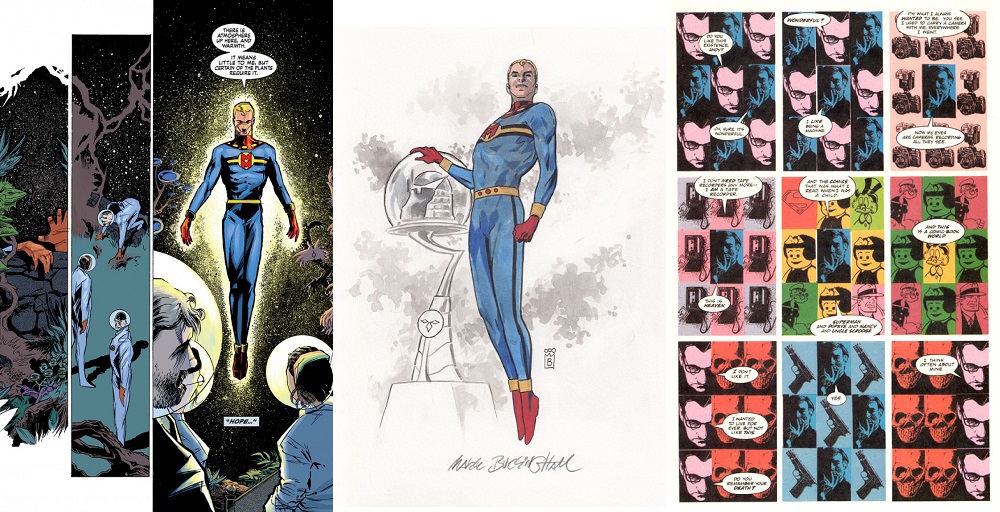
The Age Of Miracles
MB: That’s true. Which is why I tend to tread lightly and try to be very respectful to the work around me when I take on an iconic character. I think one on my most successful runs in superhero comics was my work with Paul Jenkins on Peter Parker: Spider-Man. We really tried to focus on telling emotionally driven and personal stories that went right back to the core of the character. Moving things on and yet striving to create something timeless.
Others books have proved trickier. Miracleman was harder still, as it had been hugely influential on me personally, and I felt a great weight of responsibility to be part of such an acclaimed and ground breaking series. I feel that even more now, as I return to it after a twenty five year wait.
SJR: We were talking about this before we started the interview, and knowing that the series will finally be completed, literally made me jump for joy.
MB: (Laughs) it certainly did. Yes, I will be co-writing it with Neil, and I’ll be drawing it too. We’ll finally finish telling the story we started 30 years ago.
SJR: That I started reading before that! I still have my old black and white Quality Comics Warrior magazines. Then came the Eclipse color reprints and collected editions, which ended Moore’s run, and started yours and Neil’s. Finally Marvel got it, and then it ended again… has there ever been a comic with a publishing history like it?
MB: (We’re both laughing) Some say this book is cursed. It has certainly had its fair share of troubles along the way, but, fingers and toes all crossed, I think all of that is behind us now, and I’m so happy to be working hard with Neil on finally finishing the series.
Getting a one page strip into Marvel Comics #1000 was a great way to send a little calling card from us, to reassure people it was definitely on its way. Drawing a cover for the second printing was an added bonus!
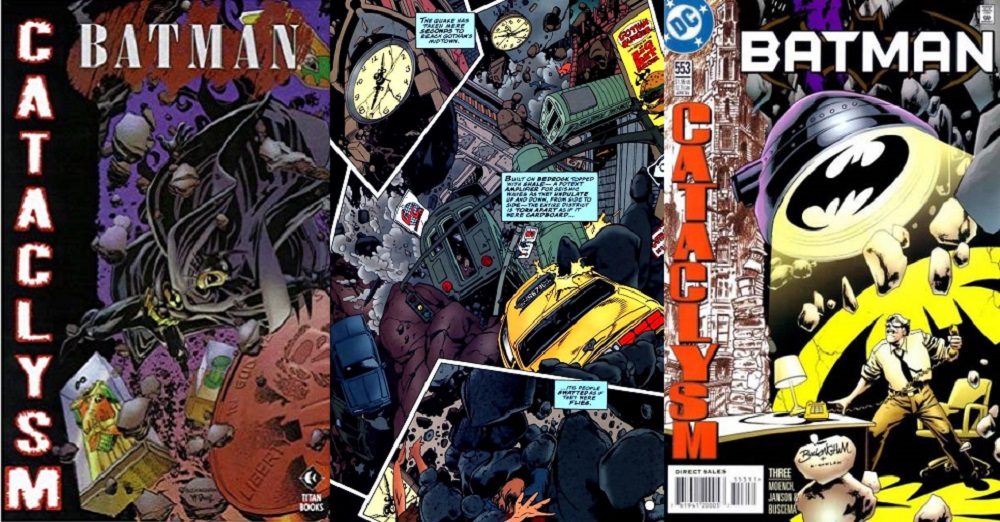
Appetite For Destruction
SJR: Of course, you’re loved by your fans as a comics creator, but one of my favorite Mark Buckingham memories is an act of pure destruction, from Batman: Cataclysm. You’re the man that destroyed the Batcave and Wayne Manor. Something that even the Dark Knight’s most nefarious nemeses have failed to achieve, you and Alan Grant accomplished.
MB: (Laughs). I hadn’t really thought about that. You are right. We really did have quite an impact on Batman with that story! Splitting Wayne Manor in two! Tearing the Batcave apart and flooding it! We even drove a great big stalactite right through Batman’s Batmobile. So much destruction! We got to introduce a new villain too. The Quakemaster!
Alan Grant is a fantastic writer and I had an huge amount of fun drawing that series. He gave me some fantastic stories to tell and spoiled me with a never ending array of my favourite Bat Villains to draw.
My only regret is that one story we were really having fun with, a two part tale featuring a new character we created called The Answer, along with old favourite The Riddler, had to be temporarily shelved due to changing plot developments and we never had a chance to go back to it. Maybe one day…
It was also at the time when Kelley Jones was drawing Batman, and – loving his work – I tried compete with him as to who could give Batman the longest ears. Kelley won (laughs).
SJR: Wow! I’m going to have to go home and pull them all out, the way you described it really brought it all back. I can’t wait to read what you and Neil write when Miracleman comes back!
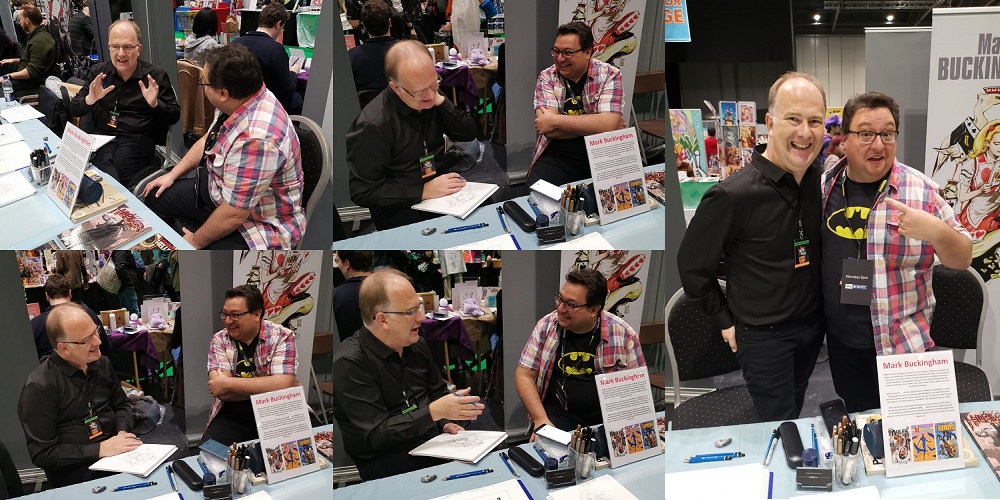
Parting Thoughts
SJR: Before I leave you in peace, I have to ask you about Death. You’re an accomplished penciller and inker, and one of your greatest collaborators has to be Chris Bachalo. On your X-Men run, as well as with both Death mini-series, you’re mostly described as inker over Chris’ pencils, but I don’t think it’s as clear cut as that… or am I way off base?
MB: That was a very important time for me. I loved working with Chris and I learned so much from him.
After Miracleman ended abruptly with the demise of Eclipse comics I felt myself somewhat adrift and rudderless, which made forging on with my own art rather difficult. I got around this by investing more time in inking other peoples work, and when I was assigned to ink Chris Bachalo on Death, I not only knew I was going to be working on an amazing comic, once more united with my old friend Neil, but I also knew that I had found a new artistic collaborator that I felt truly in sync with.
It was a point in both our careers when our styles were moving in a similar direction, and Neil always said I consumed my collaborators, learning all I could from them and weaving their styles into my own. That was definitely the case with Chris. I then followed him to Marvel, where we worked in a variety of ways, from inking full pencils on Generation-X, to just working over loose layouts on Ghost Rider 2099, where I was doing a lot of design work, and cover art, and setting some of the visual tone of the book myself. For a while we were working together so well, and so much, that Chris coined the moniker of ‘Chrucky’, a combination of Chris with my nickname ‘Bucky’, for our work together.
SJR: That’s amazing.
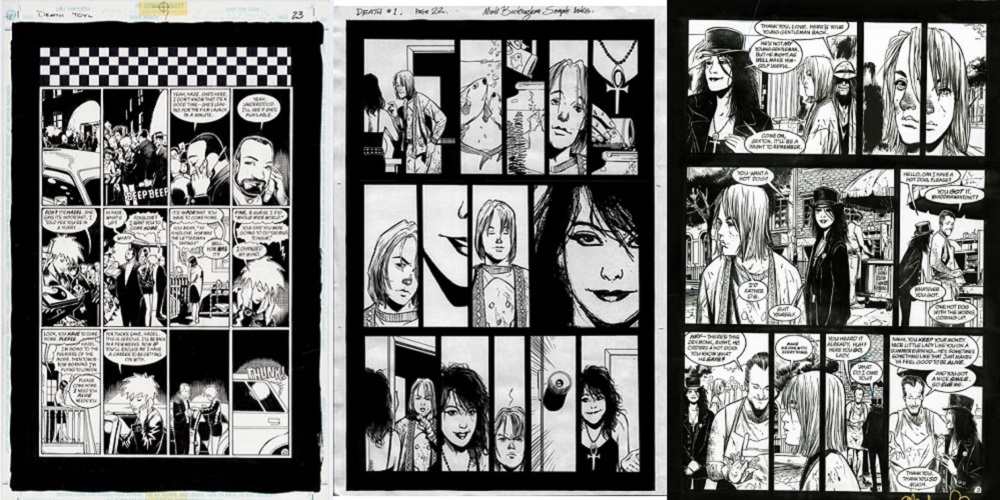
Hello, Goodbye
SJR: So, over your comics career you’ve no doubt attended many conventions, been part of dozens of panels and been asked hundreds of questions. But is there one question you always hoped someone would ask, but they never did? What’s that question and what’s the answer? Is there anything that you’d like your fans, and our readers to know… not necessarily about Mark Buckingham the artist, but as Mark Buckingham, the person?
MB: That’s a good question. I must admit I’m struggling to find an answer. I’m quite open and honest, so I usually find that if you ask me one question I’ll answer it… plus ten more you hadn’t thought to ask yet, in my general eagerness to babble. Mark Buckingham is my specialist subject, so I don’t tend to have any trouble talking about myself. (laughs).
I’ve been very fortunate to have had such a rewarding life, turning a hobby into a career. Working with so many amazing and talented people, meeting and befriending so many fabulous folk around the world, and having such a supportive readership for my books. Which is a wonderful thing, because I’ve no desire to stop, I still have many, many more stories I want to tell.
SJR: I can’t wait to read them. Thank you, Mark.
MB: Thank you, Steve.
Comics lovers know that Sandman, Death and Fables count amongst the finest comics ever. My friend and colleague Brad Filicky has even stated that they qualify as literature in his eyes, and I wholeheartedly concur. The wonderful Mark Buckingham has created some amazing art for all of these amazing series, as well as supplying beautiful visuals for titles starring some of the world’s greatest heroes.
I loved meeting and talking to Mark, and doing so has only made me appreciate and respect his work, and his talent, all the more. I recommend picking up all the books mentioned in this interview, and anything you see with his name on it.
Happy reading.
Images may be subject to copyright. Photos of the artist and interviewer by Damien Walker.